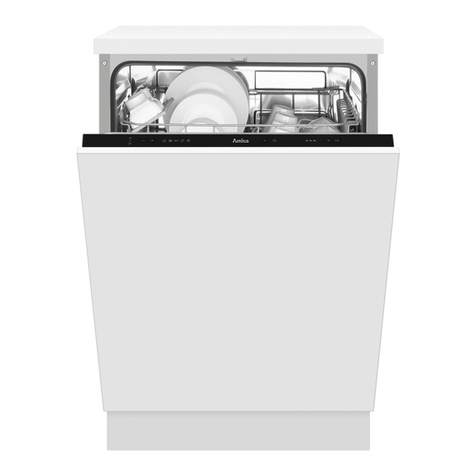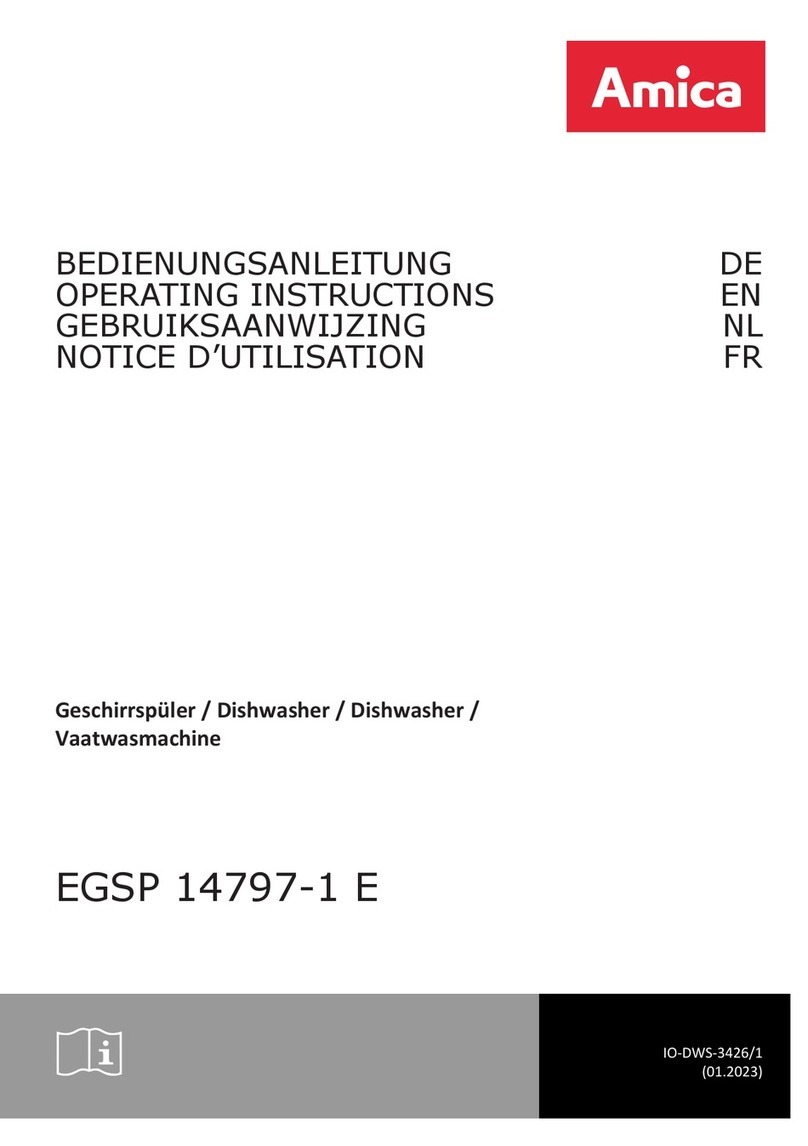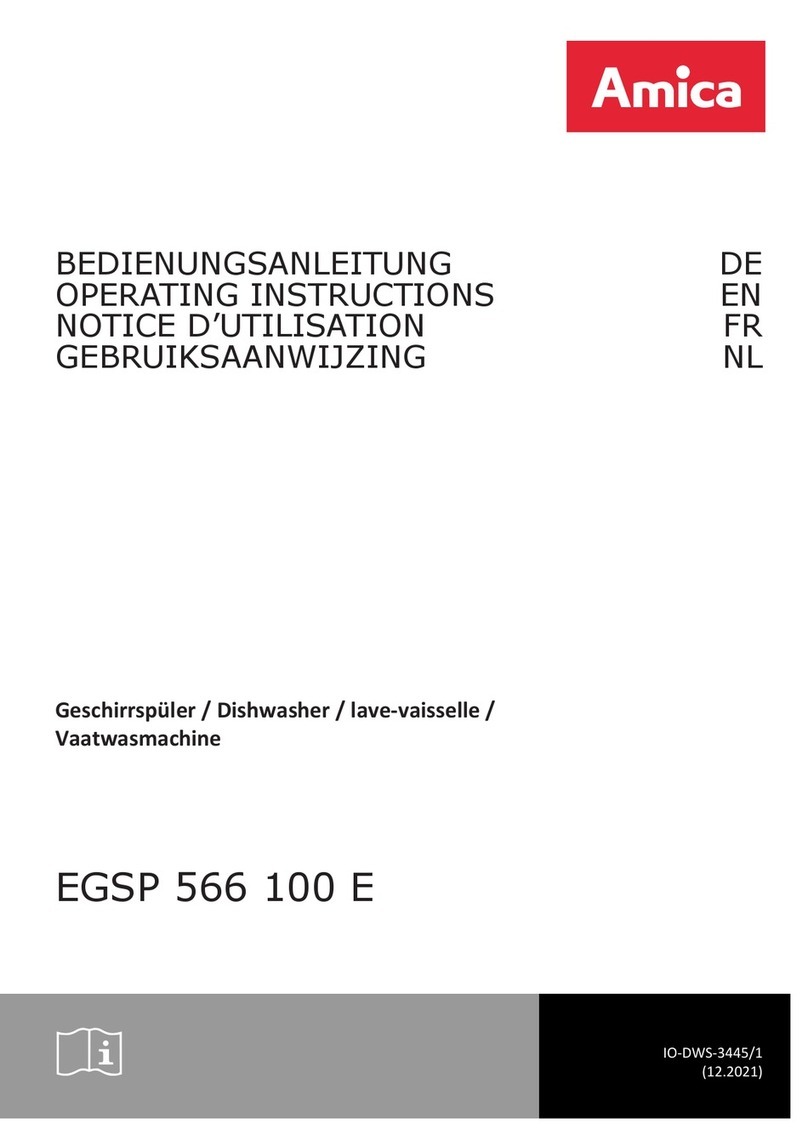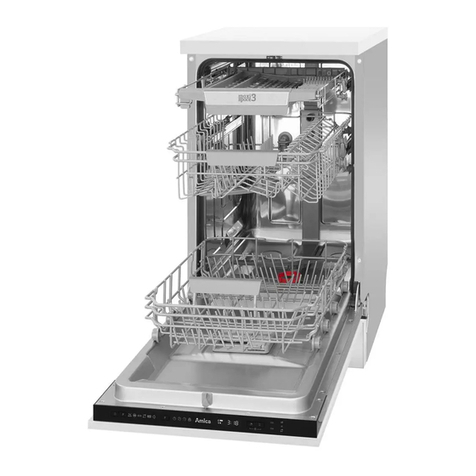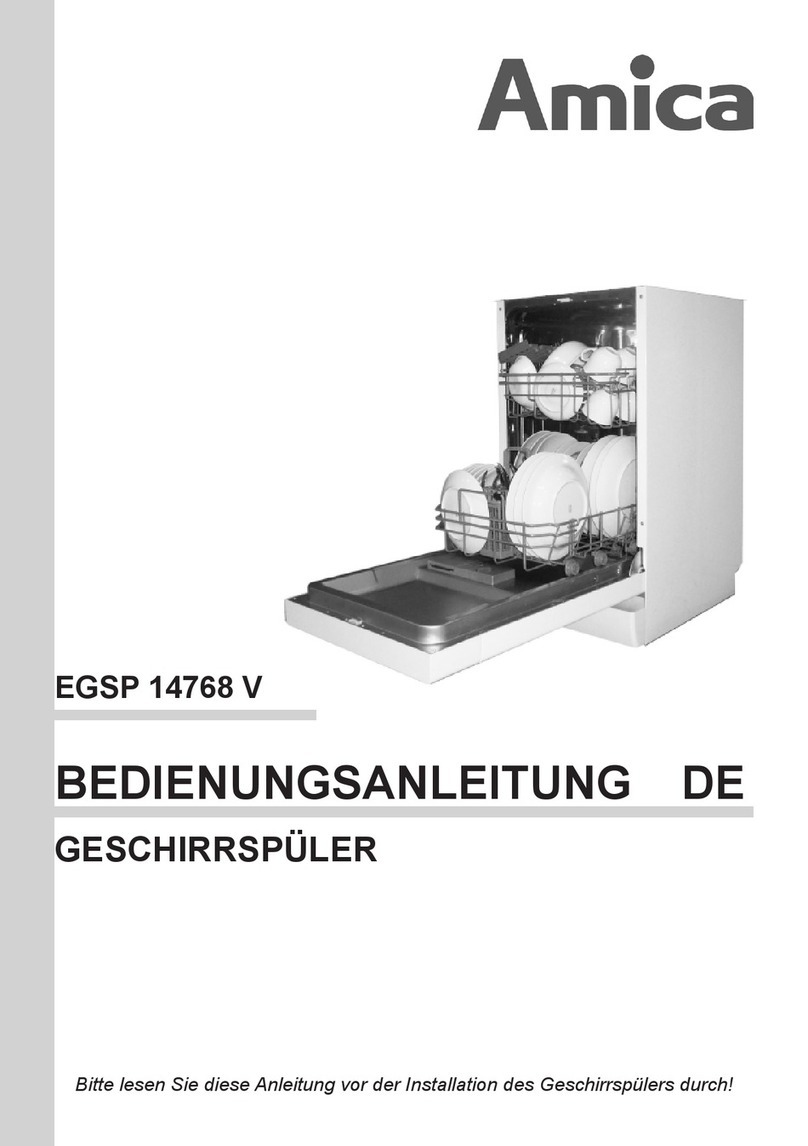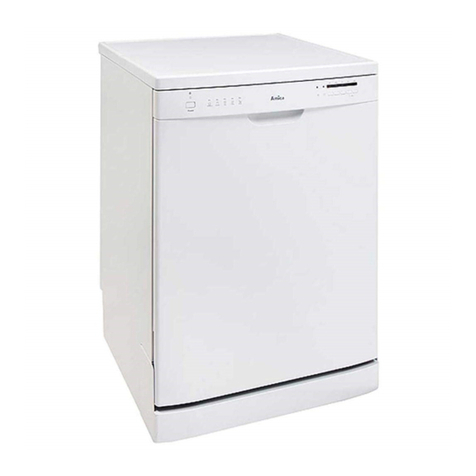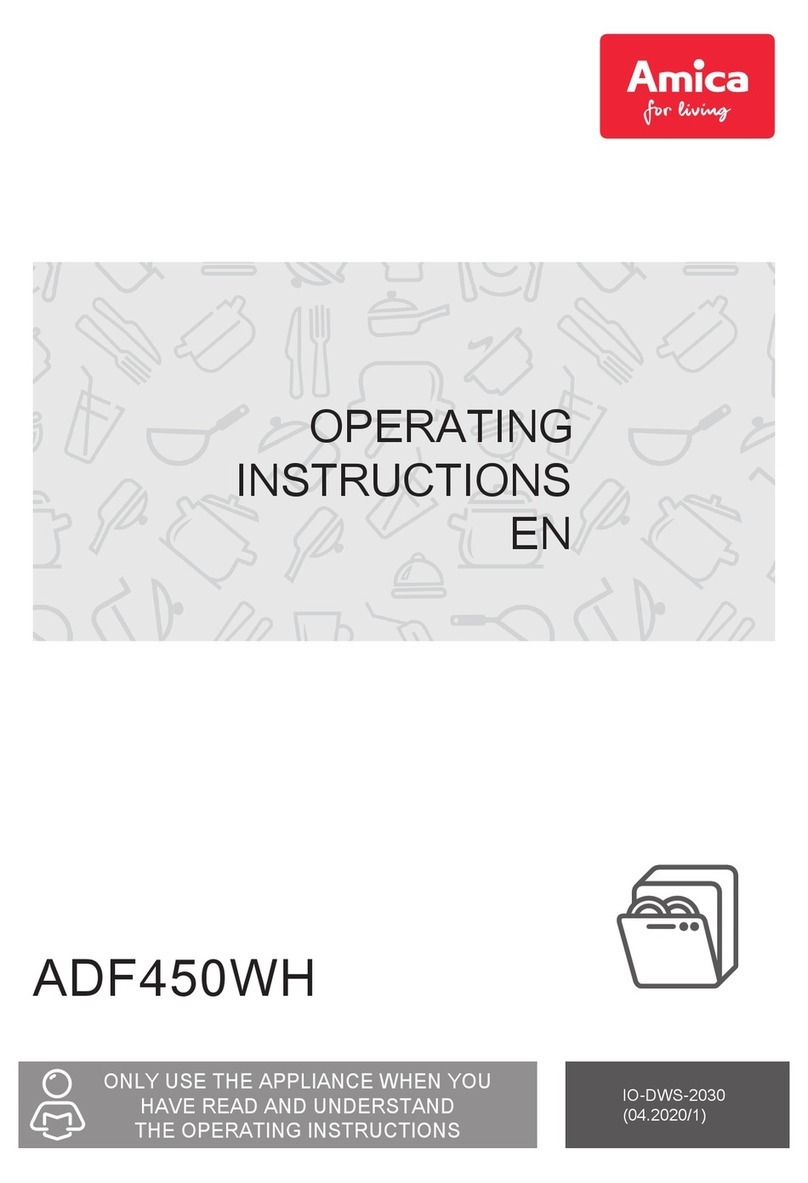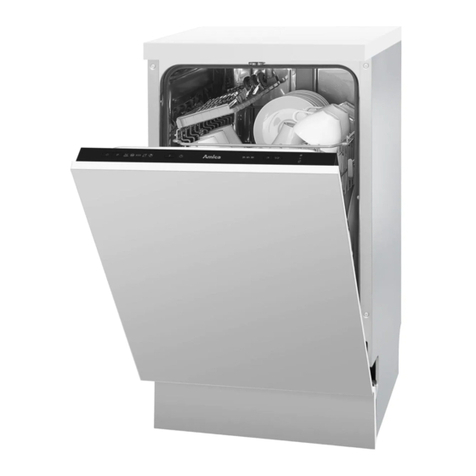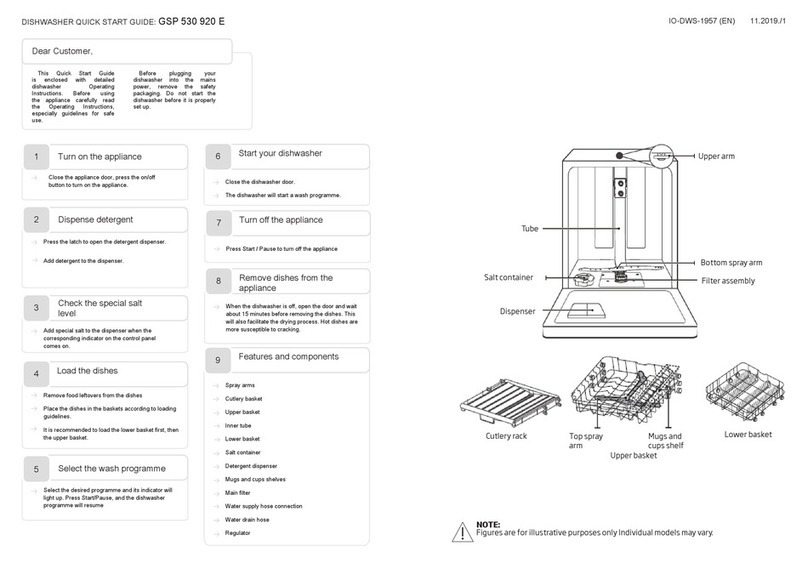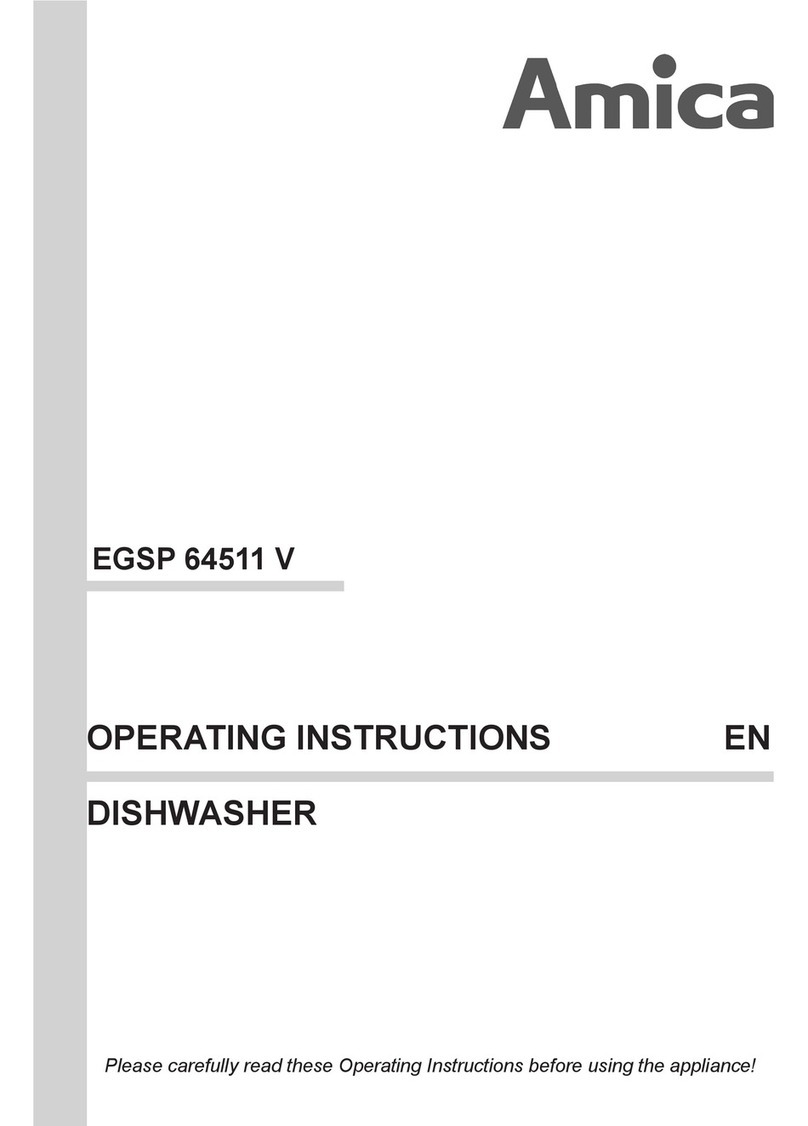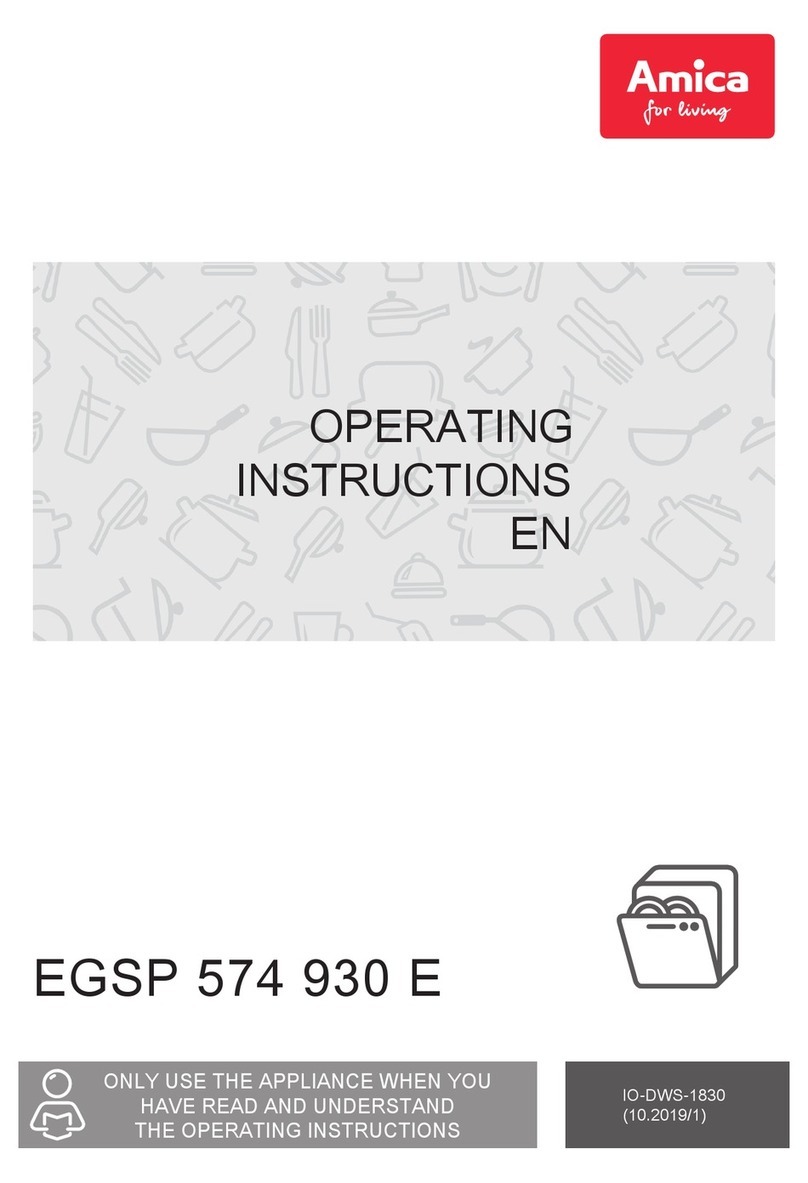
8
Fill the detergent dispenser with detergent.
The marking indicates the dosing levels , as
illustrated on right:
The place of main wash cycle detergent placed ,
“MIN”means approximately 20g of detergen.
The place of pre-washcycle detergent placed,
approximately 5g of detergent
Please observe the manufacturers dosing and storage
recommendations as stated on the detergent packaging.
Close the lid and press until it locks in place.
If the dishes are heavily soiled, place an additional detergent dose in the pre-wash detergent
chamber. This detergent will take effect during the pre-wash phase.
You findinformation about the amount of detergent for thesingle programmes on the
last page. Please aware, that according to the level soiling and the specific hardness of
water differences are possible.
Please observe the manufacturer's recommendations on the detergent packaging.
There are 3 sorts of detergents
1.With phosphate and with chlorine
2.With phosphate and without chlorine
3.Without phosphate and without chloride
Normally new pulverised detergent is without phosphate. The water softener function of
phosphate is not given. In this case we recommend to fill salt in the salt container even when
the hardness of water is only 6 dH. If detergents without phosphate were used in case of hard
water often white spots appear at dishes and glasses. In this case please add more detergent
to reach better results. Detergents without chlorine do only bleach a little. Strong and coloured
spots will not removed completely. In this case please choose a programme with higher
temperature.
“”、“”、“”“”
,
Keep all detergents in a safe place out of children's reach.
Always add the detergent in the dispenser just before starting the dishwasher.
Detergents
Attention
Use of 2 in 1 3 in 1 4 in 1 and 5 in 1 Combination / Compact Detergents“ ”、“ ”、“ ” “ ”
These products are detergents with integrated and combined detergent/rinse aid and
salt functions. Before using these products you should first check that the water hardness
in your supply is compatible with the use of these products as per the detergent manu-
facturers (on the product packaging). These products should be strictly used according to
the detergent manufacturer's instructions. In general detergents that include rinse aid or
water softener are only able to serve good results under certain conditions: rinse aid and
water softener can not adapted to specific conditions. For this reasons in some cases
there might be unwanted cleaning or drying results. Please ask the detergent manufac-
turer to inform you about the best consume conditions. If you encounter problems when
using these products for the first time then please contact the detergent manufacturers
care line. The manufacturer of your dishwasher is not liable for damages caused by
compact detergents nor gives warranty if you use compact detergents.
When use 2 in 1 3 in 1 4 in 1 or 5 in 1 Combination / Compact Deter-
gents ,please pay attention to make sure that the size of the Combination Detergents
is fitted to the dispenser so that Combination Detergents can be ease to put in the
dispenser ,and dispenser would not be broken.
NOTE:
1
2
Fill in detergent
NOTE:
12

